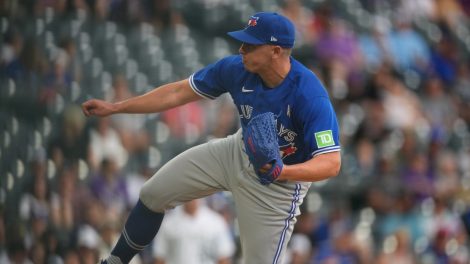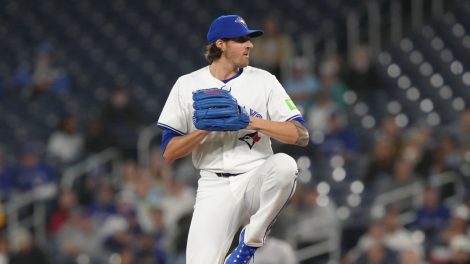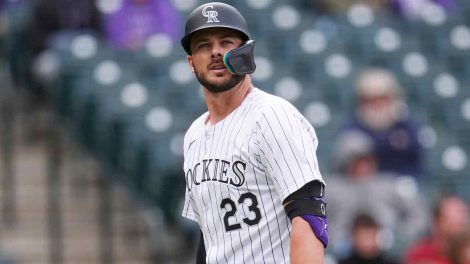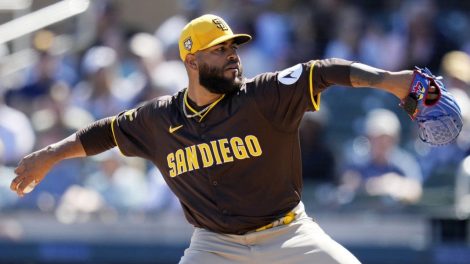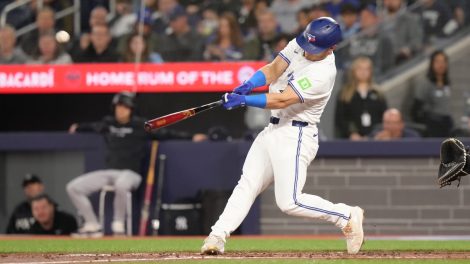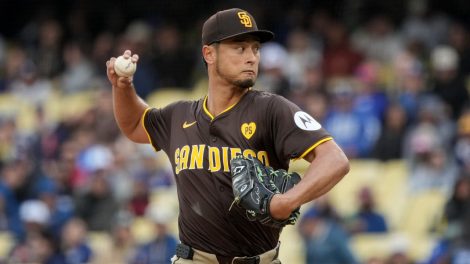There are so many reasons to not know what to make of player performances in 2020.
From the extended break and condensed summer camp, to the unpredictable quality of competition, to the ad hoc scheduling, this season has done its best to throw players off. Toronto Blue Jays saw that firsthand with Tanner Roark when he got hit hard after going nine days between starts.
That said, perhaps the most confounding thing about the results we have to parse right now is not particular to this bizarre season. It’s the ever-present early-season fog that is small sample sizes.
Any player who reaches the MLB level is capable of being effective there for a 15-game stretch. That makes it tricky to understand what’s “real” and what’s a mirage. Luckily, in recent years, Statcast has helped us see through the chaos, to a degree.
Now we aren’t seeing a guy hitting .350 and assuming he’s turned the corner based on that fact alone. We have a better sense of how he’s actually hitting the ball. The same can be said for pitchers. Anyone can fluke their way into a couple of superficially strong starts with a combination of good fortune and great defence. Thanks to the contact quality numbers available to us, it’s easier to see when that’s really happening.
[relatedlinks]
To that end, Statcast has a range of “expected” stats like Expected Batting Average, Expected Slugging Percentage and Expected ERA. These tell us the kind of results we should see from hitters or pitchers based on the way they’re hitting the ball or having it hit against them – removing luck from the equation.
Now, this isn’t a perfect cure to the small-sample-size problem, because sometimes inferior players do actually hit the ball very hard for short periods, and pitchers manage contact better than their stuff and location indicates they should. Even so, it’s probably a better tool than traditional metrics in the early going.
With that in mind, here’s a look at some of the Toronto Blue Jays’ starts through the lens of expected stats.
Overachievers
In a big-picture sense, there is no way to describe Vladdy as an overachiever. He is, without a doubt, off to a poor start. Unfortunately, the dreary .237/.286/.407 line we’re seeing actually oversells what he’s done at the plate.
Guerrero Jr.’s issues with groundballs have been well documented, but they actually haven’t cost him as much as they should have. Right now he’s hitting an unsustainable .300 on grounders, and while some have been rockets, he’s also snuck more than his fair share through the infield, like this 79.6 mph bleeder off Zack Godley.
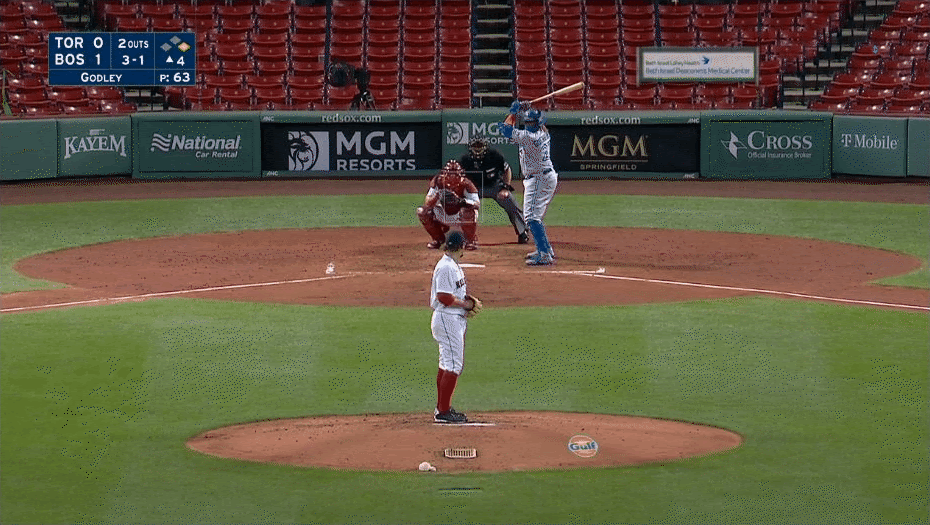
Thanks largely to his infamously low launch angle, Vladdy’s Expected Slugging Percentage sits at a disappointing .360. That’s what happens when you hit the ball on the ground more than 60 per cent of the time.
Kay has been a step behind Jordan Romano, Ryan Borucki and Thomas Hatch when it comes to hype, but he has allowed a single run in eight innings this season. Unfortunately for the left-hander, Statcast isn’t buying his 1.13 ERA, instead hitting him with an Expected ERA of 4.48. His xBA (.279) and xSLG (.504) also dwarf his current results of .172 and .345 respectively.
The young lefty has clearly gotten a touch of good luck, and he was on the mound for perhaps the best defensive play of the Blue Jays season, which came off a fortuitous deflection.

Perhaps his best piece of fortune was seeing this Brandon Lowe 404-foot shot get swallowed up by Tropicana Field when it would have been a home run in almost any other park.
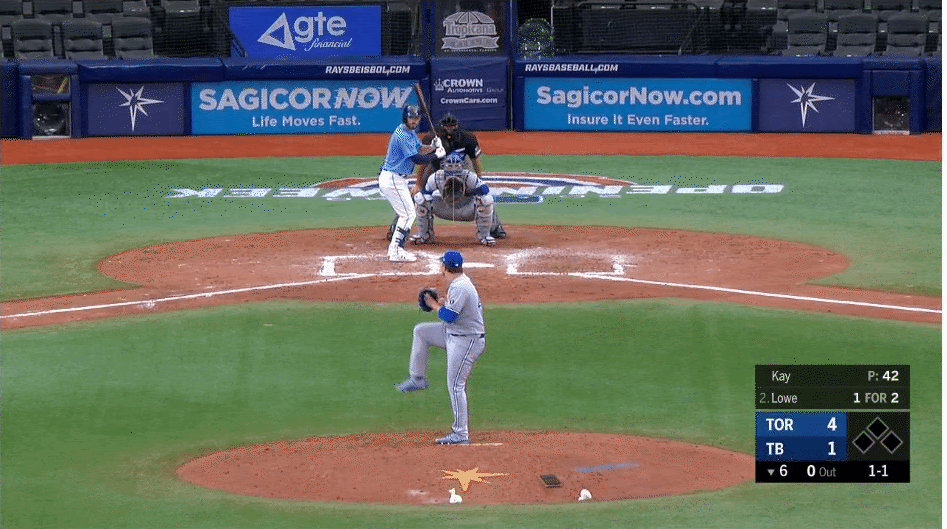
Considering Kay has posted an extremely good K/BB ratio (8:1) and his overall exit velocity against is actually above-average (87.6 mph), it’s not time to sound the alarm about the 25-year-old.
That doesn’t mean we should expect him to continue his current pace.
Looks about right
Here’s some really good news for the Blue Jays: their two best hitters this year — Bo Bichette and Teoscar Hernandez — have absolutely earned their gaudy numbers by making outstanding contact.

Hernandez, in particular, has been hitting the cover off the ball. His percentile numbers look like this:

Meanwhile, Bichette is less consistent at making hard contact, but when he does it’s barrelled up. That means no empty-calorie 100-plus-mph grounders, just the good stuff.
You can probably expect both of these guys to come down to earth to some degree, but both also have raw talent that puts few limits on their ceilings.
Underachievers
After a couple of rough outings in big spots, it seemed like there were plenty of people willing to bury Yamaguchi. On Wednesday, the right-hander showed that he might have something to offer after all, and with the benefit of hindsight it seems that his first outings may not be as bad as we remember.
Yamaguchi has only allowed three hits this season. None of them have left the park, and one of them looked like this:
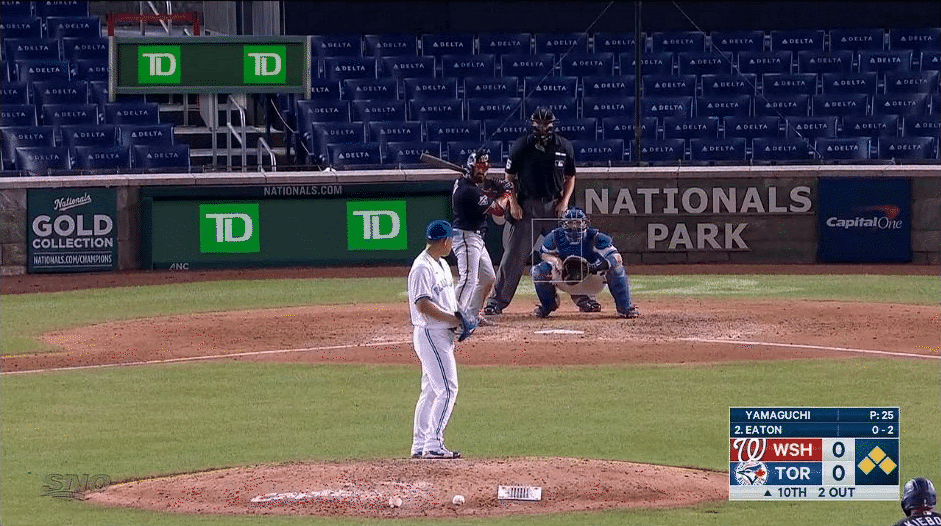
Walks were a bigger problem, as Yamaguchi issued four in his first 1.2 innings as a Blue Jays. He undoubtedly didn’t pitch well, but he also hasn’t been hit hard, and he’s got the expected numbers to prove it.
These numbers come from just four innings, and it’s fair to say we don’t know what Yamaguchi is yet. However, it’s worth considering that he might not be the lemon he looked like in the early going.
Nate Pearson (sort of)
Considering the world-class arsenal he brings to bear, it’s safe to assume the Blue Jays were hoping for a little better than a 5.11 ERA from him in his first three starts.
Pearson isn’t a Statcast underachiever in the traditional sense. His xBA against (.200) exactly matches his batting average allowed, and his xSLG (.338) is just a touch below the .356 hitters have slugged against him so far. What puts him in this category is the discrepancy between that 5.11 and his Expected ERA of 4.07.
Despite his walk issues, Pearson should have more respectable results to show for his work. His issue thus far is with sequencing. The big right-hander has only stranded 52.6 per cent of runners on base, a number that’s bound to go up, especially considering he has the swing-and-miss ability to escape situations where a productive out is enough to score. For reference, the league average in that statistic is 72.3 per cent, it’s hard to imagine Pearson living too far below that line for long.
Both of his home runs were also of the multi-run variety. While some pitchers have significantly less success with runners on base, Pearson doesn’t project to be one of those guys because he pitches out of the stretch all the time, which means those situations don’t take him out of his established mechanics.
The rookie is almost a mortal lock to improve both his strikeout and walk rates, but he’s also likely to take a step forward just by having the hits against him spread out a little more.




